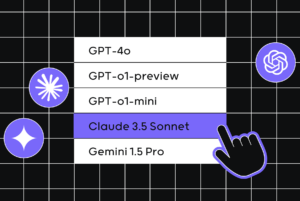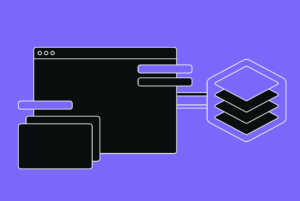10 Tips for Enhancing Software Testability in Your Development Process


In the changing world of software development, making sure that your application can be tested is important. Software testability is a crucial stage in the development process that will definitely help you avoid wasting time, money, and aggravation. The following blog article will cover 10 recommendations for improving software testability across your development cycle. These methods will help you make software that is more trustworthy and robust.

Tip 1: Understand the Importance of Software Testability
It’s essential to gain a fundamental knowledge of the critical significance of software testability before diving into particular advice. This advice is the cornerstone of successful testability initiatives.
Fundamentally, “testability” refers to how easily testing processes may be applied to your program. The effectiveness and efficiency of error identification and correction operations are directly governed by this essential factor. High testability in software systems makes them more reliable and long-lasting by nature.
To further clarify this idea, imagine software testability as the entryway to software quality. It acts as the mainstay of your quality assurance operations, determining how efficiently flaws and problems are found and fixed. A software system that is highly testable serves as a durable canvas on which exacting testing may be carried out quickly and effectively.
This fundamental knowledge’s intrinsic worth cannot be over-emphasized. You must prioritize software testability from the start of your development projects since you now understand that it is not simply a checkbox but rather a foundational element of program reliability. Building software with testability in mind is crucial to ensure that it not only fulfills immediate requirements but also persists and develops over time.
“Testability is the foundation of software reliability.” — John Johnson
Tip 2: Integrate Software Testability Metrics
You must first measure software testability in order to enhance it. Utilize metrics for software testability to learn more about the status of your project. You may monitor your progress and find areas that require improvement by using these measures. Code complexity, code coverage, and defect density are some examples of regularly used metrics.
# Example code to calculate software testability metrics
# Import necessary libraries or modules
import math
# Function to calculate code complexity (e.g., cyclomatic complexity)
def calculate_code_complexity(control_flow_graph):
# Calculate cyclomatic complexity using control flow graph
# You may need to use a specialized library or tool for this calculation
# Here, we'll assume a simplified calculation for demonstration purposes
complexity = len(control_flow_graph.edges) - len(control_flow_graph.nodes) + 2
return complexity
# Function to calculate code coverage
def calculate_code_coverage(tested_lines, total_lines):
# Calculate code coverage as a percentage
coverage = (tested_lines / total_lines) * 100
return coverage
# Function to calculate defect density
def calculate_defect_density(total_defects, code_size):
# Calculate defect density as defects per 1000 lines of code (KLOC)
defect_density = (total_defects / (code_size / 1000))
return defect_density
# Sample data for demonstration purposes
control_flow_graph = {
'nodes': ['A', 'B', 'C', 'D'],
'edges': [('A', 'B'), ('B', 'C'), ('B', 'D'), ('C', 'D')]
}
tested_lines = 800 # Number of lines covered by tests
total_lines = 1000 # Total lines of code
total_defects = 10 # Total number of defects found
# Calculate and print software testability metrics
code_complexity = calculate_code_complexity(control_flow_graph)
code_coverage = calculate_code_coverage(tested_lines, total_lines)
defect_density = calculate_defect_density(total_defects, total_lines)
print(f"Code Complexity: {code_complexity}")
print(f"Code Coverage: {code_coverage:.2f}%")
print(f"Defect Density: {defect_density:.2f} defects/KLOC")
Tip 3: Create a Software Testability Checklist
Create a thorough checklist outlining the essential components of software testability. Include things like succinct and explicit requirements, organized code, and comprehensive documentation. Throughout your project, you can refer to this checklist as a helpful resource to make sure you don’t miss any important aspects of testability.
“A checklist is a powerful tool for ensuring software testability is not an afterthought.” – Jane Smith
Certainly, here’s a sample software testability checklist that you can use as a starting point for your software development projects.
This checklist covers various aspects of testability throughout the software development lifecycle:
* Requirements and Design Phase:
- Are the requirements clear, unambiguous, and well-documented?
- Have user stories or use cases been defined and reviewed for testability?
- Is the software design modular and loosely coupled, promoting easier testing of individual components?
* Code Quality:
- Is the code well-organized and follows coding standards and best practices?
- Are meaningful variable and function/method names used to enhance code readability?
- Is there a consistent coding style across the project?
* Test Environment Setup:
- Is a dedicated test environment set up that mimics the production environment?
- Are necessary dependencies and configurations documented for easy replication?
* Logging and Error Handling:
- Is comprehensive logging implemented to capture relevant information for debugging?
- Are error messages clear and informative, aiding in issue identification and resolution?
* Test Data:
- Is test data easily accessible and well-documented?
- Can test data be generated or reset easily to ensure the repeatability of tests?
* Test Automation:
- Are automated test scripts developed for critical functionalities?
- Are these test scripts maintained and updated regularly to accommodate changes in the codebase?
* Documentation:
- Is there up-to-date documentation on how to set up the testing environment, run tests, and interpret results?
- Are test cases and their expected outcomes documented comprehensively?
* Testability Features:
- Are features built into the software to facilitate testing, such as hooks for mocking or stubbing external services?
- Is there a clear separation between business logic and presentation layers to enable easier unit testing?
* Code Reviews:
- Are code reviews conducted to identify potential testability issues early in the development process?
- Do code reviews include a focus on test coverage and quality?
* Test Coverage:
- Is there a plan for measuring and maintaining test coverage throughout development?
- Are both positive and negative test cases considered?
* Continuous Integration/Continuous Deployment (CI/CD):
- Is CI/CD implemented to automate the testing and deployment processes?
- Are tests integrated into the CI/CD pipeline to catch regressions early?
* Error Reporting and Monitoring:
- Is there a system in place to capture and report errors in the production environment?
- Are performance metrics and logs monitored for potential issues?
* Test maintenance:
- Is there a plan for maintaining and updating tests as the software evolves?
- Are regression tests rerun after significant changes to the codebase?
[blog-subscribe]
Tip 4: Emphasize Software Testability and Reliability Together
Finding a careful balance between software testability and reliability is crucial in the field of software development. These two elements are indissolubly linked, supporting one another to create reliable software. Testability is built on a foundation of reliability. A dependable system, one that regularly performs as intended, makes testing easier by giving a solid foundation on which to build test cases. On the other hand, prioritizing testability results in code that is frequently transparent and modular, lowering the possibility of hidden flaws that can jeopardize reliability. By integrating these two components, you create a framework for early bug discovery and resolution, ultimately cutting costs and increasing the dependability of the finished product.
Software development is an art, and maintaining a balance between these qualities is key to producing reliable software that can withstand rigorous testing. Stakeholders place a high value on both reliability and testability because they believe in quality control measures more when a product is trustworthy and can withstand rigorous testing. The simultaneous emphasis on testability and reliability in agile methodology is crucial for enabling quick regression testing and aligning with techniques like continuous integration. This synchronization also promotes thorough documentation and traceability, which are crucial for locating problems and guaranteeing ongoing reliability as software changes. By giving equal weight to these qualities, you build a software solution that endures while consistently exceeding customer expectations and being dependable.
Tip 5: Test the System to Ensure it is Bug-Free
The main objective of improving software testability is to make it easier to find and fix errors at the earliest possible phases of development. It is impossible to stress the importance of comprehensive testing in achieving this important goal. This advice promotes a thorough system testing strategy designed to make sure the program is free of flaws and vulnerabilities.
The proactive aspect of testing is the key component of this tip. Thorough system testing serves as a strong safety net, catching and identifying possible flaws before they materialize as crucial problems in the finished product. By putting the software through a series of tests, you may establish a controlled setting where flaws can be found, closely examined, and quickly fixed.
Automated testing tools play a pivotal role in this process. They not only speed up the testing process but also improve its level of accuracy and reproducibility. Automated tests can be run quickly and reliably, which enables problem identification right away. Additionally, they can be used repeatedly during the whole development process to prevent unforeseen flaws from being introduced by new code changes.
Following this testing methodology will provide you confidence in the caliber and dependability of your software. Early defect discovery leads to quicker problem-solving, which cuts down on the time and resources needed for bug repairs. This not only quickens the development process but also reduces the possibility of production-related flaws, which may be expensive and damaging to your brand.
Tip 6: Design Software for Testability
It is impossible to exaggerate the critical role that software design plays in determining testability. The importance of thoughtful software design is emphasized here in order to enable efficient testing at many levels, including system testing, integration testing, and unit testing.
The idea of creating a software system that is innately modular and well-structured is at the core of this advice. Your software architecture automatically becomes more testable when it embraces modularity and structure. By separating the software into independent, discrete components or modules, this design concept simplifies the testing process.
First off, since each module can be evaluated and tested independently, it makes it easier to estimate testing efforts and allows for more precise time and resource allocation. This testing granularity also makes it possible to identify and fix problems at a more granular level, increasing the overall resilience of your software.
Additionally, a well-structured, modular architecture encourages the smooth integration of testing activities into all stages of the software development lifecycle. When the various components have undergone thorough testing throughout the integration and unit testing phases, system testing may be carried out more successfully. The danger of complicated, interconnected difficulties appearing later in the development process is reduced thanks to this hierarchical approach to testing, which ensures that problems are found and fixed at the earliest opportunity.
“Design your software for testability, and testing becomes a breeze.” – Alex Turner
# Poorly designed code without modularity
def calculate_total_price(cart):
# Complex logic for calculating the total price
# ...
return total_price
# Well-designed code with modularity
class ShoppingCart:
def __init__(self):
self.items = []
def add_item(self, item):
self.items.append(item)
def calculate_total_price(self):
total_price = 0
for item in self.items:
total_price += item.price
return total_price
In the first example, we observe shoddy code that uses complicated logic to determine the final cost. The second example, in comparison, shows how a well-designed class, ShoppingCart, wraps the logic, making it simpler to test the calculate_total_price method independently.
Tip 7: Encourage Collaboration Among Developers and Testers
Encourage the development of a cooperative and communicative atmosphere between developers and testers in an effort to improve software testability. This collaboration between these two crucial teams can have a major impact on testability improvement.
Building a bridge of understanding and common goals through fostering tight collaboration between developers and testers. By encouraging this kind of cooperation, you open up a space where the two teams may work together to develop thorough test cases, detect potential problems, and share insightful knowledge. A successful testability strategy is built on this effective relationship.
The possibility of increased test coverage is one of the collaboration’s most obvious benefits. Together, developers and testers may find and address a wider range of test scenarios and edge situations because the boundaries between their respective tasks become less rigid. This increased coverage can reveal undetected flaws and guarantee more trustworthy testing.
Additionally, the continuous information sharing between developers and testers might result in a higher degree of openness and knowledge sharing. Developers become more aware of the testing requirements and difficulties, while testers obtain a deeper understanding of the subtleties of the software. The software and test cases may be better designed as a result of this mutual knowledge.
Tip 8: Implement Continuous Integration and Continuous Testing
Integrate continuous integration (CI) and continuous testing (CT) into your development pipeline. CI ensures that code changes are automatically integrated and tested, allowing for early bug detection. CT involves running automated tests continuously, providing immediate feedback to developers.
# Sample configuration for a continuous integration (CI) pipeline using Jenkins
pipeline {
agent any
stages {
stage('Checkout') {
steps {
// Checkout your source code repository
checkout scm
}
}
stage('Build') {
steps {
// Compile and build your software
sh 'mvn clean install'
}
}
stage('Test') {
steps {
// Run automated tests
sh 'mvn test'
}
}
}
}
Here, we show how to establish continuous integration (CI) and continuous testing (CT) using a condensed Jenkins pipeline configuration. The pipeline uses Maven to create the product, perform tests, and automate source code checkout.
Tip 9: Document Testability Requirements
The precise documentation of testability requirements is one frequently disregarded but essential component of enhancing the testing process. This crucial procedure has a significant impact on the efficacy and efficiency of your testing efforts. You build a strong basis for a thorough testing plan by carefully outlining what needs to be tested, how it should be examined, and the expected results.The process of writing down these testability requirements acts as a guide for your testing endeavors. It guarantees that testing operations are in line with the goals and expectations of the project. This coordination not only raises the overall standard of the testing procedure but also encourages uniformity among the testing team members.
Tip 10: Learn from Past Articles
Using the amount of information and expertise found in earlier articles and drawing on your own prior experiences can be a very effective tool for improving the testability of your software. In order to enhance your existing projects and direct the course of your future software development endeavors, this tip encourages you to learn more about this invaluable resource.
Think about reading through old articles, papers, or reports you’ve written or found. These written records frequently contain pearls of wisdom and tactics that, when used properly, can greatly improve the testability of your product. By looking back, you may find trends, spot typical mistakes, and identify the effective tactics that have been used in the past.
Additionally, considering previous endeavors and their difficulties, it might be enlightening. Consider how testability might have been more effectively incorporated into those projects. Have you encountered any snags, obstacles, or misunderstandings that may have been avoided using improved testability techniques? You can be better prepared to handle comparable problems in subsequent software development endeavors by identifying these situations and comprehending how testability would have made a difference.
“Learning from the past is the key to a brighter software development future.” – Sarah Johnson
The process of improving software testability is continuous and permeates all stages of the software development life cycle. You’ll be more prepared to produce software that is not only tested but also dependable, robust, and ultimately bug-free if you go by these ten suggestions. Keep in mind that your efforts today to improve testability will pay dividends later with more satisfied users and streamlined development cycles.



